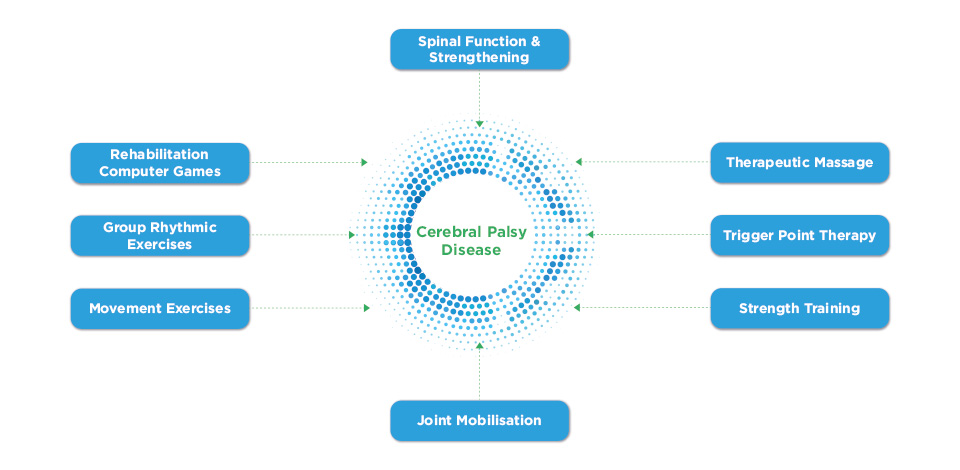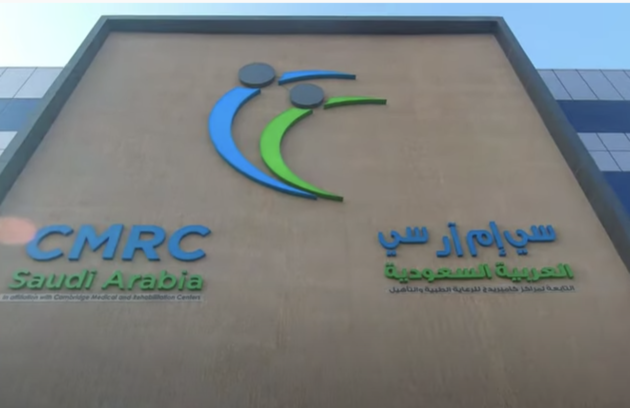Cerebral palsy is a non-progressive disorder of the brain caused by damage pre, during or post birth. Although the injury that caused the cerebral palsy symptoms does not progress, the level of disability for someone with cerebral palsy may progress as they grow.
This is because cerebral palsy alters many things about the person’s body, from muscle structure, to movement and internal organ function.
Table of Contents
The Effects Of Cerebral Palsy On The Body
This can affect posture, movement and co-ordination and mean that as a child grows, the muscles become shorter and tighter, their muscle tone increases, and this gives the impression of the condition worsening. Generally, children with Cerebral Palsy have a delay in their development and do not achieve the same goals as their peers, at the same time.
Reception of deep sense can also be affected in cases of cerebral palsy. There are receptors within the joints, tendons, and muscles that convey information about the body’s posture, balance, and movements. Information received through these receptors is essential not only for the performance of all movements but also for training on motion and learning new movements.
Recent studies have shown that the dysfunction of the spine causes poor reception and interpretation of the sensory messages by the central nervous system, making it more difficult to develop movement in patients with cerebral palsy.
It is vital that a child with Cerebral Palsy engages in a life long management program to optimize their health and participation in school and socially. The Kozyavkin method draws together research findings into a program that can be applied by therapists and physicians to not only treat the peripheral muscles and joints, but also incorporate active treatment and re-education of the spinal joint movements and musculature. The Kozyavkin team also believe that working with neuroplasticity (the ability of the bodies nervous system to grow and adapt), strengthening the vital structures throughout the body, restores correct mechanical function and enhances the flow of sensory messages throughout the nervous system. This philosophy has become the basis of the intensive Kozyavkin method.
Intensive Neuro-Rehabilitation Program – The Kozyavkin Method
The Kozyavkin method is an Intensive Neuro Rehabilitation program for the treatment of patients with Cerebral Palsy and other neurological conditions where increased tone and spasticity is affecting movement. Designed by Professor Kozyavkin, the program has one aim: to improve the quality of the life for all patients with neurological disorders.
The program is delivered through intensive cycles of therapy and is designed to enhance and complement traditional therapies for neurological conditions. The program assists in the management of increased tone and spasticity, joint movement and control, and nutrition of tissues through increased blood flow, and thus provides the child with the ability to achieve their motor milestones and function. The most common condition treated by the Kozyavkin team is Cerebral Palsy.
What does the Kozyavkin Rehabilitation System consist of ?
The Kozyavkin method to rehabilitate nerve functions consists of two distinct phases – the intensive rehabilitation process and the consolidation phase. The rehabilitation process takes place in the rehabilitation center and usually lasts from 15-21 days. Following this phase, the child returns to their usual routine but completes a home exercise program daily, designed to further develop their newly acquired skills.
Multi – System Rehabilitation Program
The Active “cycle” of Rehabilitation
The Intensive Neuro Rehabilitation Program is a multi-system program. Treatment programs include techniques aimed at restoring spinal and peripheral joint range of movement, enhancing muscle strength, co-ordination and control, reducing spasticity and increased tone through movement, massage and weight bearing, rhythmic exercises, functional, goal orientated movement re-education sessions, light therapy, vibration therapy, focused computer game based sessions and hydrotherapy. The sessions are carried out by highly skilled physicians, physiotherapists and massage professionals, each specially trained and certified to perform the treatment. Each treatment element is described in more detail below.

Spinal Function and Strengthening
The multi-section strengthening of vital mechanics of the spine is the basis of the rehabilitation system devised by Professor Dr. Kozyavkin. It aims to solve the problem of functional discontinuation of the spinal segments and restore normal movement.
Manual therapy is used to achieve enhanced movement and alignment at each spinal segment. Techniques are applied in a precise order and followed by functional movement, strengthening and re-education of the muscle tissues.
Trigger Point Therapy
Biologically active points are affected by a low power neuromuscular electrical stimulator. The trigger points are immediately affected by post-muscular relaxation. The treatment is very well tolerated and does not cause any discomfort.
Joint Mobilisation
This is a passive exercise method, used to improve joint movement, stimulate blood circulation, increase muscle flexibility and prevent stiffening joints. The process begins with the treatment of large joints (thigh, knee, shoulder), followed by small joint.
Therapeutic Massage
This system is used in the rehabilitation program to prepare the patient to strengthen the vital mechanics of the spine, muscular relaxation, and treatment with reflexes, which include traditional massage methods and combined with post-muscle relaxation. The proper alignment of the musculoskeletal system is essential to the strengthening of the spine’s vital mechanics. Active massage methods are used to stimulate low-pressure and weak muscles.
Movement Exercises
In our therapeutic program, we use exercises designed to restore and enhance the movement of the spine and limbs and acquire new movements necessary for daily life skills. Following the law “from centre to periphery”, the Kozyavkin method focuses on the trunk and surrounding joints, before moving to peripheral areas. Training begins first with simple movements followed by movements that are more complex. Daily sessions include breathing exercises, moving joints as well as strengthening exercises.
Group Rhythmic Exercises
This method is used to help the child’s emotional development and social integration. These group exercises lead to music and dance. Patients are grouped into groups according to their age and level of kinetic abilities. Parents participate in these sessions, where positive emotional behavior catalyzes the patient’s recovery and strengthens their faith in their abilities.
Strength Training
Many mechanical treatment methods are used to strengthen muscles, improve regulation, and correct movement patterns. Lower limbs are trained using machines that promote active and active assisted muscle use.
Repetition is key to develop muscle memory and correct movement patterns. Gait retraining using treadmills with or without suspension systems, enables children to practice all aspects of the gait pattern without the fear of falling. In some cases, vibration therapy is used to enhance sensory input into the muscles before the strength training is carried out. this helps the muscles by increasing their activity levels in preparation for strength training.
Rehabilitation Computer Games
We encourage patients to make precise movements and we arrange a positive emotional background during rehabilitation treatment by combining therapeutic exercises with specialized computer games. Learning skills through play is integral to the Kozyavkin method and every child loves to play computer games!
For over 15 years, the International Clinic of Rehabilitation has been developing and applying specialized gaming devices and related software for computer game rehabilitation. While playing fascinating computer games, patients perform specific therapeutic exercises.
Computer game therapy is one of our rehabilitation treatment programs. We have many specialized rehabilitation games to choose from. We have designed rehabilitation games performed on Dance Mats in order to practice balance exercises and coordinate stepping movements. These games have been developed specifically for patients with motor disorders to help them improve stepping movements, balance, motor response speed, and cognitive abilities.
What Conditions Can Benefit From The Kozyavkin Method ?
- Cerebral palsy (all forms, including quadriplegia, spastic diplegia, double hemiplegia, hemiplegia, hemiparesis, paraparesis, atonic astatic, mixed hyperkinetic form, etc.)
- Delayed motor development in young children;Effects of traumatic brain injuries, residual effects of cerebrovascular lesions and Sequelae of infections affecting tentral Nervous system.
- Osteochondrosis, spondylosis with severe tonic muscular syndromes, and painful motor, sensory and vascular disorders;Secondary vertebral visceropathy (cardialgia, bronchial asthma, chronic bronchitis, dyskinesia of the gastrointestinal tract, etc.);Non-inflammatory diseases of the peripheral joints (arthropathy, arthrosis) in remission period;Diseases of the peripheral nervous system (plexitis, polyneuropathy, neuropathy of different etiologies) in remission period.
How Effective is the Kozyavkin Method ?
The main goal of the Kozyavkin Method is to improve the quality of life of the patients and to insure successful adaptation at home and in society. Improving and enhancing the method is very important to the Kozyavkin team. Over the past 12 years, the program has analyzed and documented progress from 12,256 patients who completed rehabilitation treatment according to the Kozyavkin Method.
Of the patients in the study:
- 89% of patients suffered from different forms of cerebral palsy
- 6% of patients suffered from vertebrogenic pathology
- 3% of patients were affected by organic lesions of the nervous system (strokes, traumas)
- 2% of patients had other neurological diseases.
Of the patients diagnosed with Cerebral Palsy:
- 73% of patients had spastic tetra paresis/ quadriplegia (all 4 limbs affected
- 16% – spastic diplegia (mainly lower limbs involved)
- 7% – hemiparesis (one side of the body affected)
- 2% – atonic and astatic form of the disease
- 2% – hyperkinetic form of the disease
Data collected at follow up shows 45% of children rapidly develop enhanced gross motor functions as a result of the program and 47% maintain function between cycles.
Why CMRC?
CMRC Hospital is the specialized provider for Long-term Care and rehabilitation services in Saudi Arabia. With one main facilities in Saudi Arabia, which are designed in a rehabilitation and long-term care hospital with a capacity of 66 beds.
CMRC provides an interdisciplinary clinical approach for Vent Rehabilitation Services which is customized for adults, adolescents, and children. The best rehabilitation services are not only our goal but our ultimate objective is to customize the care plan for each patient and make sure that the patient’s family and their members are integrated into the treatment plan.
When you joined Saudi Arabia hospital for any kind of our rehabilitation services or even for long-term care you will feel as if you are at #Your Second Home.

